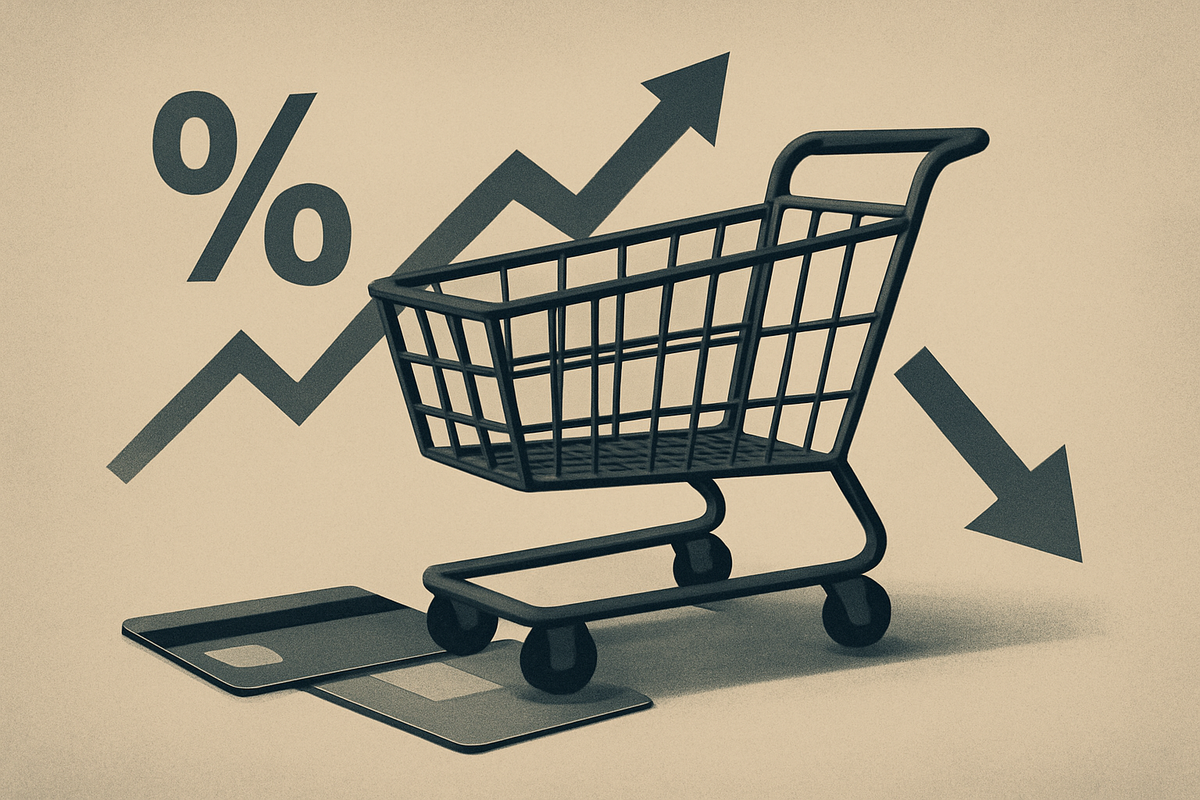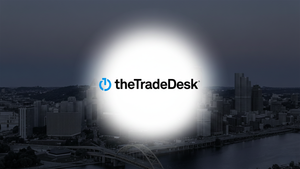
New York, NY – November 10, 2025 – The Consumer Discretionary sector in the S&P 500 finds itself at a critical juncture, navigating a complex economic landscape characterized by conflicting signals from consumer behavior and broader macroeconomic pressures. While the sector has demonstrated robust long-term growth, recent weeks have seen a notable downturn, signaling a potential shift in investor sentiment as the crucial holiday shopping season approaches. Investors are closely monitoring the interplay of persistent inflation, rising interest rates, and a palpable decline in consumer confidence, all of which are shaping the sector's immediate performance and long-term outlook.
This sector, encompassing everything from e-commerce giants and automotive manufacturers to leisure and apparel companies, is particularly sensitive to the ebb and flow of household finances and discretionary spending power. As inflation continues to erode purchasing power and higher interest rates make borrowing more expensive, the ability and willingness of consumers to spend on non-essential goods and services are being tested. The current environment presents both challenges and opportunities, forcing companies to adapt their strategies while investors re-evaluate their positions in this dynamic segment of the market.
Sector Performance Under Scrutiny: Inflationary Pressures and Rate Hikes Cast a Shadow
The Consumer Discretionary sector's recent performance reflects a market grappling with an uncertain economic future. The Consumer Discretionary Select Sector SPDR Fund (NYSEARCA: XLY), a key benchmark for the sector, has experienced a dip, slipping by 2.3% on November 6th and declining 1.4% over the last month. This recent weakness is nearly double that of the broader S&P 500 (NYSEARCA: SPY) during the same period, indicating specific headwinds for discretionary spending. Despite this, the XLY's year-to-date performance remains positive at 4.3% as of November 7, 2025, with the broader S&P 500 Consumer Discretionary (Sector) showing a 7.21% year-to-date return as of October 31, 2025. Over longer horizons, the sector has delivered impressive returns, with a 1-year return of 24.23% and a 3-year annualized return of 20.41% as of October 31, 2025.
However, a closer look reveals significant valuation concerns. The XLY's forward price-to-earnings (P/E) ratio stands at approximately 30x, notably higher than the S&P 500's ~25x, suggesting that investors are paying a premium for exposure. This elevated valuation, coupled with a high concentration risk—Amazon.com Inc. (NASDAQ: AMZN) and Tesla Inc. (NASDAQ: TSLA) alone constitute roughly 46% of the XLY's portfolio—makes the sector particularly vulnerable to shifts in economic sentiment or performance of these key players. The sector's P/E ratio of 32.37 and P/S ratio of 5.62 are also above historical medians.
The immediate implications of inflation and interest rates are profound. Persistent inflation, with retail prices 25% higher than 2020 levels, continues to erode consumer purchasing power, forcing households to prioritize essential spending over discretionary items. This is further compounded by rising interest rates, which increase the cost of borrowing for both consumers and businesses. Higher rates translate to more expensive credit card debt, auto loans, and mortgages, directly impacting consumers' disposable income and their ability to finance large discretionary purchases. For companies, higher borrowing costs can stifle investment and growth. The preliminary Michigan Consumer Sentiment index for the USA recently fell to a three-year low of 50.3, underscoring a widespread lack of confidence that is expected to translate into reduced discretionary spending, especially as the critical holiday shopping season approaches. An ongoing government shutdown is also exacerbating household anxiety, further dampening market confidence.
Companies Navigating the Crosscurrents: Winners and Losers Emerge
The current economic climate is creating a clear bifurcation among companies within the Consumer Discretionary sector. Those catering to higher-income demographics or offering essential "discretionary" experiences are proving more resilient, while companies reliant on broad-based consumer spending or facing significant debt burdens are struggling.
Potential Winners: Companies that cater to affluent consumers or offer unique, experience-based services are showing strength. For instance, the travel industry remains robust, with US travel spending projected to grow by 3.9% to $1.35 trillion. This benefits companies like Marriott International (NASDAQ: MAR) or Booking Holdings Inc. (NASDAQ: BKNG), which are capitalizing on the post-pandemic shift towards prioritizing experiences. Luxury brands such as Tapestry Inc. (NYSE: TPR) and Ralph Lauren Corp. (NYSE: RL) have also demonstrated impressive one-year returns of 127.61% and 56.83% respectively, indicating sustained demand from higher-income households. E-commerce and delivery services that offer convenience, like DoorDash Inc. (NASDAQ: DASH), which saw a 54.50% one-year return, also continue to perform well as consumers seek efficiency. Companies with strong balance sheets and less reliance on consumer credit are better positioned to weather economic turbulence.
Potential Losers: Companies targeting lower to middle-income consumers are likely to face significant headwinds. Retailers heavily reliant on credit-financed purchases for big-ticket items, or those selling non-essential goods with easily deferrable purchases, will struggle as consumers tighten their belts. Companies with high operating leverage and significant debt are also vulnerable to rising interest rates, which increase their cost of capital and reduce profitability. Furthermore, any business highly exposed to supply chain disruptions or tariffs will see their costs increase, which they may or may not be able to pass on to price-sensitive consumers. The overall decline in consumer sentiment and cautious holiday spending outlook, where most growth is expected from price increases rather than unit volumes, will challenge retailers across the board, particularly those in the general merchandise and apparel segments. Companies that have not adapted to changing consumer preferences, such as a preference for value or experiences over material goods, may also see declining market share.
Broader Significance: A Bellwether for Economic Health
The performance of the Consumer Discretionary sector is often considered a bellwether for the broader economic health, reflecting consumer confidence and spending power. Its current struggles, particularly the divergence from the S&P 500's overall performance, signal potential underlying weaknesses in the economy. This event fits into a broader trend of economic uncertainty, where the lingering effects of high inflation, aggressive monetary tightening by central banks, and geopolitical tensions are creating a cautious environment.
The potential ripple effects are significant. A slowdown in consumer discretionary spending can impact a wide array of industries, from manufacturing and logistics to advertising and real estate. Suppliers to these companies could see reduced orders, and retailers might face inventory gluts, leading to increased promotional activities and squeezed margins. Furthermore, a sustained downturn in this sector could signal a broader economic contraction, potentially influencing employment rates and overall GDP growth. Regulatory bodies and policymakers will be closely watching these trends, as a severe slowdown could prompt discussions around fiscal stimulus or a shift in monetary policy stance. Historically, periods of high inflation and rising interest rates have almost invariably led to a contraction in discretionary spending, often preceding or coinciding with economic slowdowns. The current situation bears resemblance to past cycles where consumer confidence, when significantly eroded, has been a reliable indicator of impending economic challenges. The bifurcation of spending, with higher-income households continuing to spend while lower-income households retrench, highlights growing economic inequality and its potential societal implications.
What Comes Next: Navigating a Period of Uncertainty
Looking ahead, the Consumer Discretionary sector faces a period of continued uncertainty, requiring strategic agility from businesses and careful consideration from investors. In the short-term, the upcoming holiday shopping season will be a critical test. Companies will likely engage in aggressive promotions and discounts to attract cautious consumers, potentially impacting profit margins. Retailers that have successfully managed inventory and diversified their offerings to include value-oriented options or unique experiences may fare better. The trajectory of inflation and future interest rate decisions by the Federal Reserve will also play a pivotal role, with any signs of easing likely to provide some relief to consumers and the sector.
In the long-term, companies in the Consumer Discretionary sector may need to pivot their strategies to adapt to evolving consumer behaviors. This could involve a greater focus on personalized experiences, loyalty programs, and subscription models to secure recurring revenue streams. Investment in supply chain resilience and technology to improve efficiency and reduce costs will also be crucial. Market opportunities may emerge in niche segments that cater to specific, resilient consumer groups, or in companies that can offer compelling value propositions. Conversely, challenges will include managing increased debt servicing costs, potential labor market volatility impacting wages and employment, and the ongoing pressure to innovate in a highly competitive environment. Potential scenarios range from a gradual recovery, as inflation moderates and interest rates stabilize, to a more prolonged slowdown if economic headwinds intensify, potentially leading to consolidation within the sector as weaker players struggle.
Wrap-up: A Cautious Outlook for Discretionary Spending
The Consumer Discretionary sector currently stands at a crossroads, with strong historical performance overshadowed by immediate concerns regarding consumer spending, inflation, and interest rates. Key takeaways include the significant decline in consumer confidence, the impact of persistent inflation on purchasing power, and the dampening effect of higher interest rates on credit-dependent purchases. While pockets of strength exist, particularly in the travel industry and luxury segments catering to affluent consumers, the broader outlook for discretionary spending remains cautious.
Moving forward, the market will be keenly watching for signs of inflation moderation and any shifts in monetary policy. Investors should pay close attention to companies' balance sheets, their ability to adapt to changing consumer preferences, and their exposure to the more vulnerable segments of the consumer market. The upcoming holiday season will provide crucial insights into consumer resilience and the effectiveness of companies' strategies. Ultimately, the lasting impact of the current economic environment on the Consumer Discretionary sector will depend on the duration of inflationary pressures and the path of interest rates, demanding vigilance and strategic foresight from all stakeholders.
This content is intended for informational purposes only and is not financial advice





